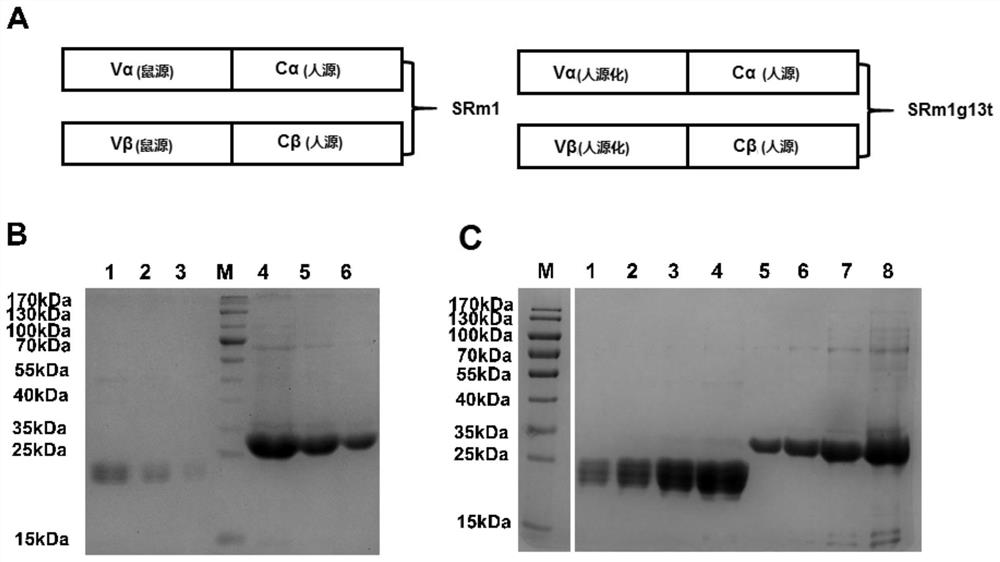mage-a3 humanized T cell receptor
A technology of MAGE-A3 and cell receptors, which is applied to cells modified by introducing foreign genetic material, receptors/cell surface antigens/cell surface determinants, viruses/bacteriophages, etc., can solve the problem of reduced affinity for antigen recognition
- Summary
- Abstract
- Description
- Claims
- Application Information
AI Technical Summary
Problems solved by technology
Method used
Image
Examples
Embodiment 1
[0251] The detailed methods or steps for the transformation of humanized TCR and its cell function experimental verification are as follows:
[0252] 1. TCR Transformation
[0253] 1. Sequence Alignment
[0254] After sequence alignment, the CDR region of murine TCR was grafted onto the human TCR backbone, and the sequence of the stability site was introduced to obtain SRm1g13t (see figure 1 ).
[0255] 1.1 Align the V regions of the α and β chains of the murine TCR with the TRAV and TRBV database sequences in the human TCR library on IMGT to find the most similar sequence, such as the most similar sequence found in the present invention are TRAV18*01 and TRBV28*01 ( figure 1 -A and figure 1 -B).
[0256] 1.2 The CDR regions (CDR1, CDR2, CDR3) in the α and β chain V regions of the murine TCR were directly grafted to the corresponding framework regions of TRAV18*01 and TRBV28*01 to form the corresponding non-stability-optimized human The V region of the TCR alpha, beta ch...
PUM
 Login to View More
Login to View More Abstract
Description
Claims
Application Information
 Login to View More
Login to View More - R&D
- Intellectual Property
- Life Sciences
- Materials
- Tech Scout
- Unparalleled Data Quality
- Higher Quality Content
- 60% Fewer Hallucinations
Browse by: Latest US Patents, China's latest patents, Technical Efficacy Thesaurus, Application Domain, Technology Topic, Popular Technical Reports.
© 2025 PatSnap. All rights reserved.Legal|Privacy policy|Modern Slavery Act Transparency Statement|Sitemap|About US| Contact US: help@patsnap.com



